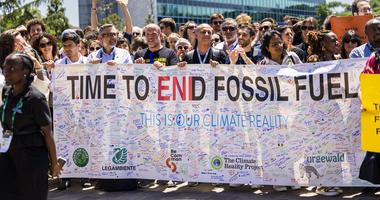
How Do Renewables Lower the Cost of Electricity?
8 min read
There is one question dominating basically every conversation on energy in 2025: How the four-letter-word are we going to meet all this exploding demand?
After decades of sluggish growth, US electricity demand is projected to increase nearly 16% by 2029. The drivers are by a pretty familiar list, including data centers, artificial intelligence, a growing manufacturing sector, and electrification throughout the economy. Just for starters.
Even before the current administration began its muzzle velocity assault on all things green, this trend was worrying climate advocates for the potential to keep coal and gas plants on life support.
Now that federal funding freezes and executive actions have many major clean energy projects on pause or simply canceled, the questions of how we’ll meet this surging demand – and what that means for the climate – are becoming even more acute.
But these aren’t the only questions. Because as anyone with even a passing understanding of basic economics will tell you, surging demand typically means surging prices. Which has profound implications for all of us who open an electricity bill every month.
The good news for both consumers and our climate is that current administration’s least favorite form of energy also happens to be the cheapest. And even in a grid still largely dominated by fossil fuels, the more green energy on the grid, the less we all pay for all our electricity.
Clean Energy = Cheap Energy
In all the talk about unleashing American “energy dominance,” there’s one critical fact often left out: Solar PV and wind energy are the cheapest forms of new electricity in most of the world.
How’d we get here? For renewables, the story has been years of aggressive cost reductions, with average solar prices falling 83% from 2009 to 2023 and onshore wind falling 65% in the same period. Costs have largely fallen so dramatically as the industry has learned how to make them better, faster, and cheaper as more and more of the technology is deployed.
Analysts and utilities measure and compare the cost of each energy source using a metric called the “levelized cost of electricity” (LCOE). LCOE “measures lifetime costs divided by energy production and calculates the present value of the total cost of building and operating a power plant over an assumed lifetime.”
In lay person terms, LCOE measures what it costs any given solar, wind, gas, or other power plant to produce energy over its entire lifetime. Including the cost of building the plant in the first place.
The figure this provides lets us compare the economics of each energy type in dollars per megawatt-hour (MWh) to dollars per megawatt-hour.
Because construction and generation costs can vary because of location and other factors, analysts typically look at the range of costs for each type of power. And recent analysis shows that when you compare energy costs in this way, clean energy wins. By a lot.
For example, the average LCOE of coal – the cheapest fossil fuel – is $118/MWh. Natural gas peaker plants are even worse, at $169/MWh.
Renewables are a different story. The average cost for electricity from onshore wind facilities is $50/MWh. Utility-scale solar isn’t far behind at $61/MWh. That’s almost half the average cost of coal and nearly one-third the average price for gas.
One of the major reasons for the gulf in costs is that – unlike fossil fuel power plants – wind and solar don’t require a constant supply of fuel, so operating costs are much lower. Plus, the costs for building new solar and onshore wind continue to fall. Which means the economic gap between clean energy and fossil fuels will continue to grow.
Cheaper generation means cheaper consumer bills
Few of us spend a lot of time thinking about where our electricity comes from. We just flip the switch and expect the light to come on.
But depending on what time you flip the switch and what else is happening in the world that day, the electrons feeding that bulb at 8 AM and 8 PM could be coming from entirely different producers.
To put it simply, for many of us, the electricity we use at home and work is generated by multiple different sources. Which feeds the bulb at any given time is governed by a complex series of markets that has a huge impact on our bill at the end of the month. Which is where renewables come in to lower costs for everyone.
To see how, let’s take a look at Texas, the top US state for renewable energy generation and battery capacity in 2024. The electricity market in the Lone Star State is run by the Electric Reliability Council of Texas (ERCOT).
ERCOT is responsible for providing electricity to consumers at all times, so it must balance supply and demand while keeping costs as low as possible.
The first thing ERCOT does is to project how much energy it expects users to need in a given time frame, aka projected demand.
Then it uses a bidding system, where different generators submit bids for how much power they can produce at a specified cost. Because the LCOE of renewables is typically lower than gas or coal, they’ll typically be able to produce more power for that cost and so bid lower.
ERCOT sorts the bids by price, and once it determines there’s enough capacity to cover projected demand, it cuts the most expensive generators from the list. This is known as the “merit stack.” Essentially what it means is that ERCOT agrees to buy power from generators in order of cheapest to most expensive price until it covers demand.
The catch is that the last generator left on the merit stack (i.e. the most expensive) sets the price for all the accepted generators. This is known as marginal pricing.
Since the vast bulk of capital for renewables is spent in the initial investment, operating costs are low, so the bids to supply power are extremely competitive. The result is that renewables typically crowd out the far more expensive gas and coal power plants in the merit stack.
Remember that even within generation types, some producers can produce electricity more cheaply than others. So even though the average LCOE for peaker gas is $169/ MWh, some generators may be producing power for $110/MWh and others for $228/MWh.
While there may not be enough renewable capacity at a given time to cover 100% of grid demand, increasing the number of cheap wind and solar plants in the stack displaces the most expensive coal and gas plants that set the price for all the electricity consumers use.
The bottom line here is that the more cheap renewables in the merit stack, the lower the price you’ll pay.
But What About Calm Days and Nights?
Now, it’s true that the wind doesn’t always blow enough to spin a turbine, and the sun doesn’t always shine. But that intermittency is factored into the bidding process for marginal price markets.
While costs may go up when renewables aren’t contributing as much to the grid, overall costs will go down as renewables outcompete more expensive generators when they’re producing electricity. So, instead of always paying the higher marginal prices for the more expensive generators, with renewables, we’re only sometimes paying that higher rate.
In addition, battery storage costs have dramatically fallen in recent years, enabling energy from cheap renewables to effectively serve the grid more often and for longer.
Gas prices go up and down. The cost of sunlight is constant.
Another reason to want more renewables from your utility: Unlike fossil fuels like liquified natural gas (LNG) with volatile fuel prices and related costs, the price of electricity from renewables has historically been pretty stable. Meanwhile, with construction, labor, and borrowing costs rising, LNG producers have been attempting to renegotiate their contracts for higher prices. One guess who those higher prices get passed to.
This gets to one of the hiding-in-plain sight superpowers that renewables have: After construction, you’re not paying for fuel. Compare that to gas and coal, which forces generators to continue purchasing fuel, even as inherently volatile fuel prices lead to price instability and contribute to inflation.
So Why Are More Fossil Fuels the Answer Again?
Which leads you to ask, if renewables are ultimately so much cheaper for consumers and electricity demand is projected to shoot through the roof, why is the current administration doubling down on natural gas? Especially when the few companies that make the turbines critical for gas power plants are stretched far beyond capacity, with backlogs for new orders going all the way to 2029 or later. To put it simply: Even if you wanted to start construction on a new gas plant tomorrow, you couldn’t get the parts for years.
It’s not just the usual-suspects climate crowd pointing these challenges out either. Onstage at CERAWeek, NextEra CEO Ketchum told audiences:
“We’ve got to be really careful here, from an affordability standpoint, about the choices that we’re making. What we don’t want to do is drive ourselves to only one solution — that being a gas-fired solution — that’s now more expensive than it ever has been in its history. It just so happens that the most economic solution comes with clean energy benefits as well.”
Renewables aren’t just the cheapest to build. They’re also often the fastest, available to come online within 12–18 months in many cases. There’s also the huge potential still to be tapped. After all, in just one hour, the Earth is hit with enough sunlight to power the planet for a full year and wind has the potential to provide over 40 times more electricity than the world consumes.
So if policymakers are looking for answers to how to meet all the rising demand for electricity and keep costs low for consumers, maybe all they need to do is look up.
Stay up to date on the latest in clean energy and climate action by signing up for our list today.




